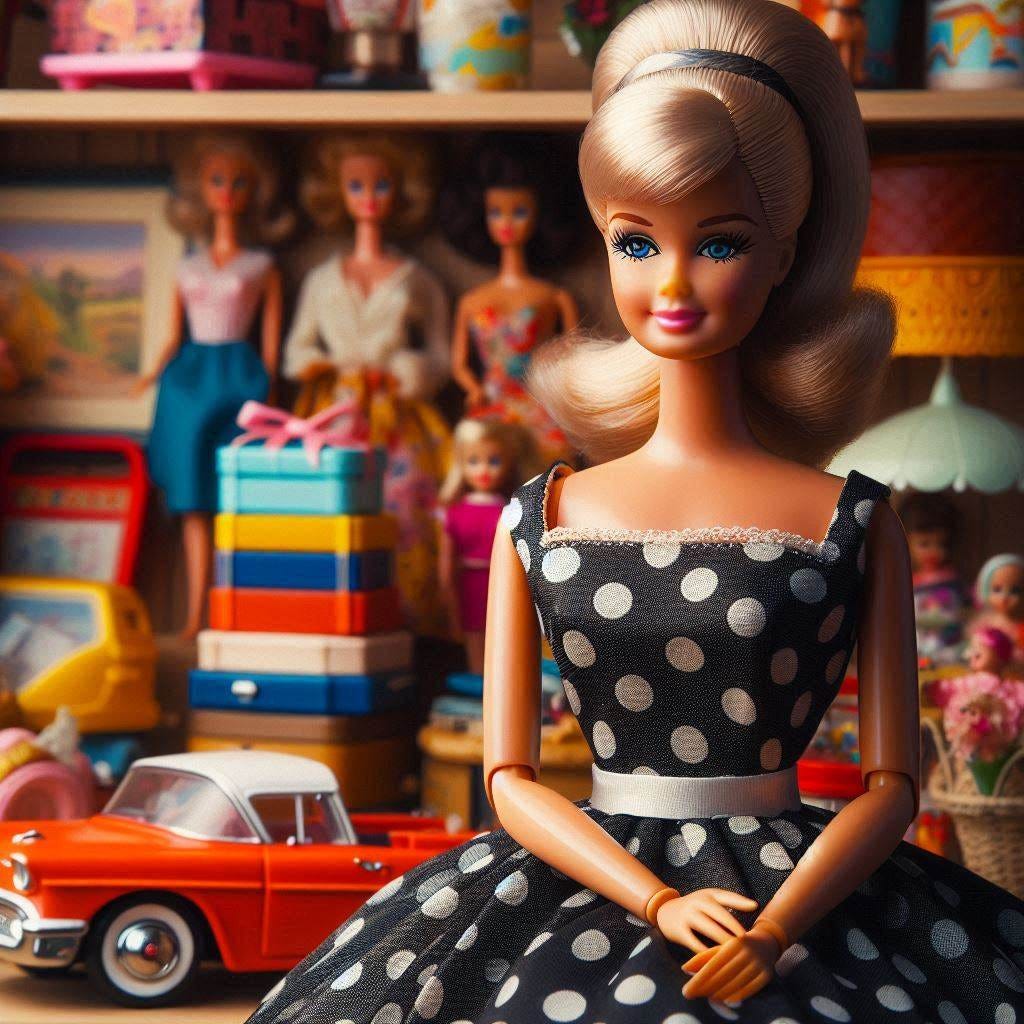The Mysteries of History (March 9 Edition)
Pancho Villa; Dutch Surrender to Japanese; Firebombing of Tokyo; Barbie Debuts
“Those who cannot remember the past are condemned to repeat it.” — Spanish-American philosopher George Santayana, 1905
“You can evade reality, but you can’t evade the consequences of evading it.” — Alice O’Connor (paraphrase)
1916 — Pancho Villa Terrorizes a New Mexico Village
public domain image of Pancho Villa’s men from wikimedia commons
During a Civil War in Mexico, the American President Woodrow Wilson kept changing his mind on which side in the struggle to support. He was for Pancho Villa (1878-1923) at one point, but later Wilson sided with Villa’s rival. Pancho then sought revenge in January 1916 by killing 18 Americans he had taken hostage from a train in Mexico. A couple of months later, on this date, Villa and his men crossed the border into Columbus, New Mexico, and attacked the residents of that town, killing 19 of them and setting Columbus aflame before absquatulating.
This depredation got Wilson’s ire up, and he sent 6,000 American troops into Mexico to find and punish Villa. They used horses (of course), the relatively new “horseless carriage” (automobile), and the even newer aeroplane in their search for the outlaw. Although the U.S. Army engaged with Villa’s men on a few occasions, they never found their leader.
The officer in charge of the American expedition, General John Pershing (1860-1948), eventually returned to the States and was subsequently sent to Europe when World War 1 broke out. Villa, although revered by many in Mexico, was assassinated by his enemies there in 1923.
Questions: How large was Columbus, New Mexico (how many residents did it have) when Villa and his men attacked? Was it a battle or just a slaughter? How large is Columbus now? Is the Townes Van Zandt song “Pancho and Lefty,” made famous by Willie Nelson and Merle Haggard, about Pancho Villa?
1942 — The Dutch Surrender Indonesia to the Japanese
public domain images from wikimedia commons
For hundreds of years the Dutch had controlled Indonesia, first through the Dutch East India company (which was basically a colonizing situation, with the native residents working in slave-like circumstances on plantations), then the Dutch (Netherlands) government itself, then briefly the British government, and then the Dutch again.
This changed in World War 2, when Japan pushed the Dutch (who were being aided militarily by the British and Australians) out for good. The Dutch surrendered to the Japanese on this day in 1942 on the island of Java.
Questions: What is the connection between the island of Java and coffee? How long did the Japanese control the area? How large is Indonesia? What crops were the colonizers mostly involved with? Where are the “Spice Islands”?
1945 — Worst Firebombing in History
public domain images from wikimedia commons
For most people, when they think of the bombing of Japan in World War 2, what comes to mind is the atomic bombs dropped on Hiroshima and Nagasaki in early August 1945. But less than five months before the overwhelming devastation of those two cities, Japan’s capital Tokyo was firebombed on this date in 1945 by the U.S. Air Force using more conventional weapons of mass destruction (specifically two thousand tons of incendiary bombs). This was the most destructive firebombing in history, even worse than the horrific firebombing of Dresden, Germany, which had taken place less than a month earlier, and was written about here.
The pictures above show some of the sad story: the cold-blooded planning of the wanton slaughter of innocents, the widespread indiscriminate mayhem caused, and a woman and her baby who had been killed (representative of many, many others who shared the same fate). Between 80,000 and 130,000 Japanese civilians were killed in this action. The death toll at Hiroshima and Nagasaki, combined, was between 150,000 and 246,000 people.
The bombs weren’t actually dropped until early on March 10th, a little after midnight, but the departure of the bombers had taken place several hours earlier, on the afternoon of March 9th. The bombers, flying at only 500 feet above a densely populated, wooden-framed-housing suburb of Tokyo named Shitamachi (targeted partially as an experiment to see how “well” the firebombing would go with those variables in play) caused so much damage that mists of blood and the stench of burning human flesh could be seen and smelled from the cockpits of the bombers, causing the pilots to don oxygen masks to keep from vomiting. The onslaught lasted for more than three hours and, rather than the perpetrators feeling remorse or guilt for what they had done, or pity for the victims, was resumed again the following day as if they were simply putting in “another day at the plant.”
Questions: How many bereaved never-the-same-again relatives and friends were created as a result of this horrendous assault? How did those who took part in the firebombing, either directly or indirectly (by ordering it, primarily) feel about it afterward? Were any “at peace” with it, thinking it was justified and did more good than harm? Were any on the other hand so distraught that they fell out of love with life and voluntarily truncated their own, unable to live with the guilt? Did any of those involved lose their sanity over their role in it? Would a wild animal ever treat hordes of its own kind the same way humans sometimes do, duped by propaganda and egged on by peer pressure?
1959 — Barbie as Debutante
image generated using Bing Image Creator
On this date in 1959, at a toy fair in New York City, the Barbie doll was first introduced. The eleven-inch-tall Barbie was the first mass-produced doll in the U.S. with adult features.
Later, Barbie’s beau Ken came along (the doll designer/inventor’s children, not coincidentally, were named Barbara and Ken); thereafter, Barbie’s friend Midge made the scene, followed by Barbie’s little sister Skipper.
By 1993, Barbie revenues surpassed one billion dollars, and eventually the milestone of one billion dolls sold worldwide was reached.
Questions: Have you ever had a Barbie doll? If yes, how many? Do you have an overall positive or negative view of Barbie? Do you think Barbie is a good role model for girls, a bad one, or a little of both? Have you seen Greta Gerwig’s movie “Barbie”?










